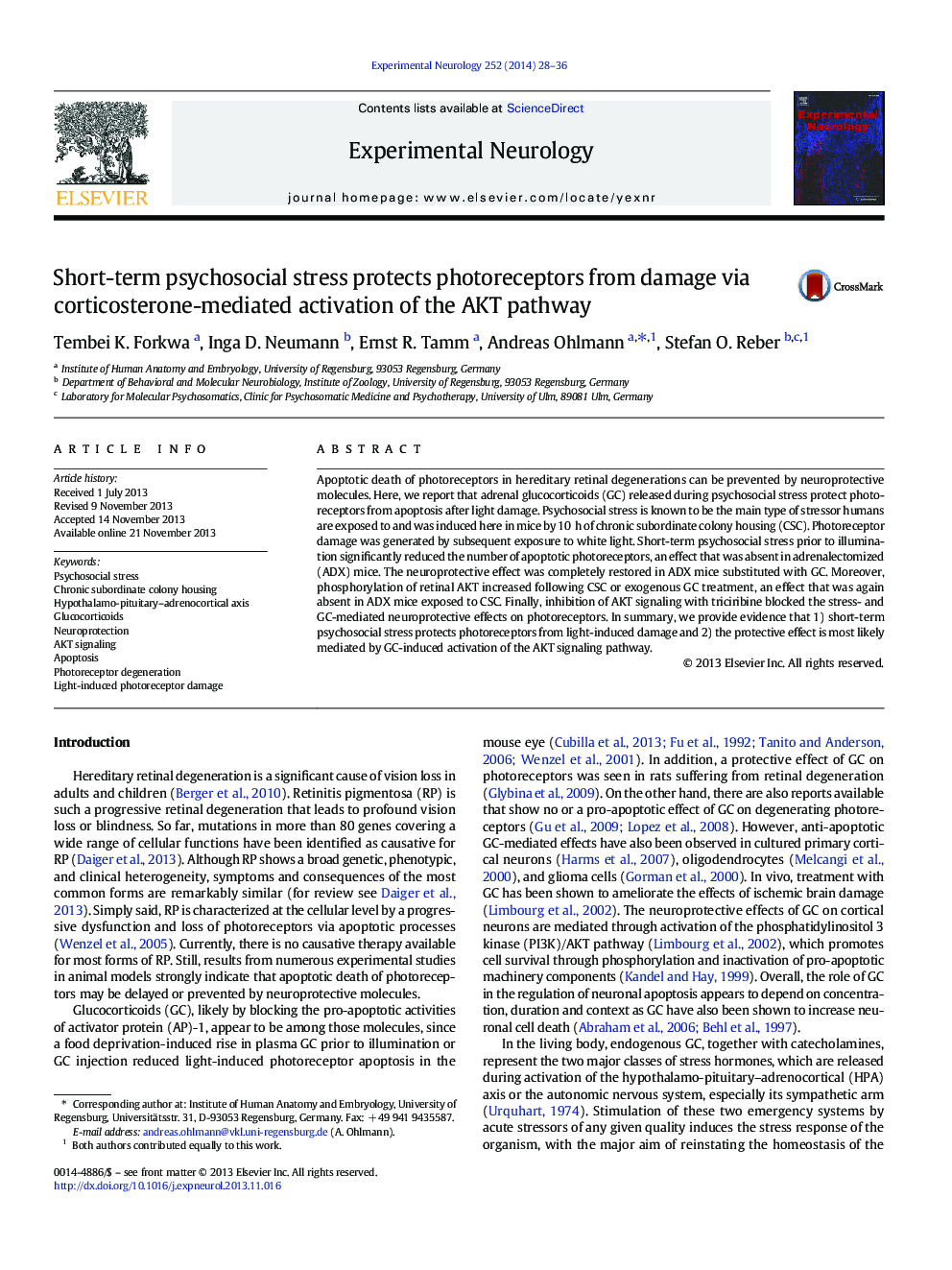| Article ID | Journal | Published Year | Pages | File Type |
|---|---|---|---|---|
| 3055545 | Experimental Neurology | 2014 | 9 Pages |
•Short-term psychosocial stressor exposure protects damaged retinal neurons.•Stress-induced neuroprotection is mediated via activation of the HPA axis.•Stress-mediated increase of plasma glucocorticoids enhances AKT signaling.•Stress mediates protection of photoreceptors via AKT signaling.
Apoptotic death of photoreceptors in hereditary retinal degenerations can be prevented by neuroprotective molecules. Here, we report that adrenal glucocorticoids (GC) released during psychosocial stress protect photoreceptors from apoptosis after light damage. Psychosocial stress is known to be the main type of stressor humans are exposed to and was induced here in mice by 10 h of chronic subordinate colony housing (CSC). Photoreceptor damage was generated by subsequent exposure to white light. Short-term psychosocial stress prior to illumination significantly reduced the number of apoptotic photoreceptors, an effect that was absent in adrenalectomized (ADX) mice. The neuroprotective effect was completely restored in ADX mice substituted with GC. Moreover, phosphorylation of retinal AKT increased following CSC or exogenous GC treatment, an effect that was again absent in ADX mice exposed to CSC. Finally, inhibition of AKT signaling with triciribine blocked the stress- and GC-mediated neuroprotective effects on photoreceptors. In summary, we provide evidence that 1) short-term psychosocial stress protects photoreceptors from light-induced damage and 2) the protective effect is most likely mediated by GC-induced activation of the AKT signaling pathway.
